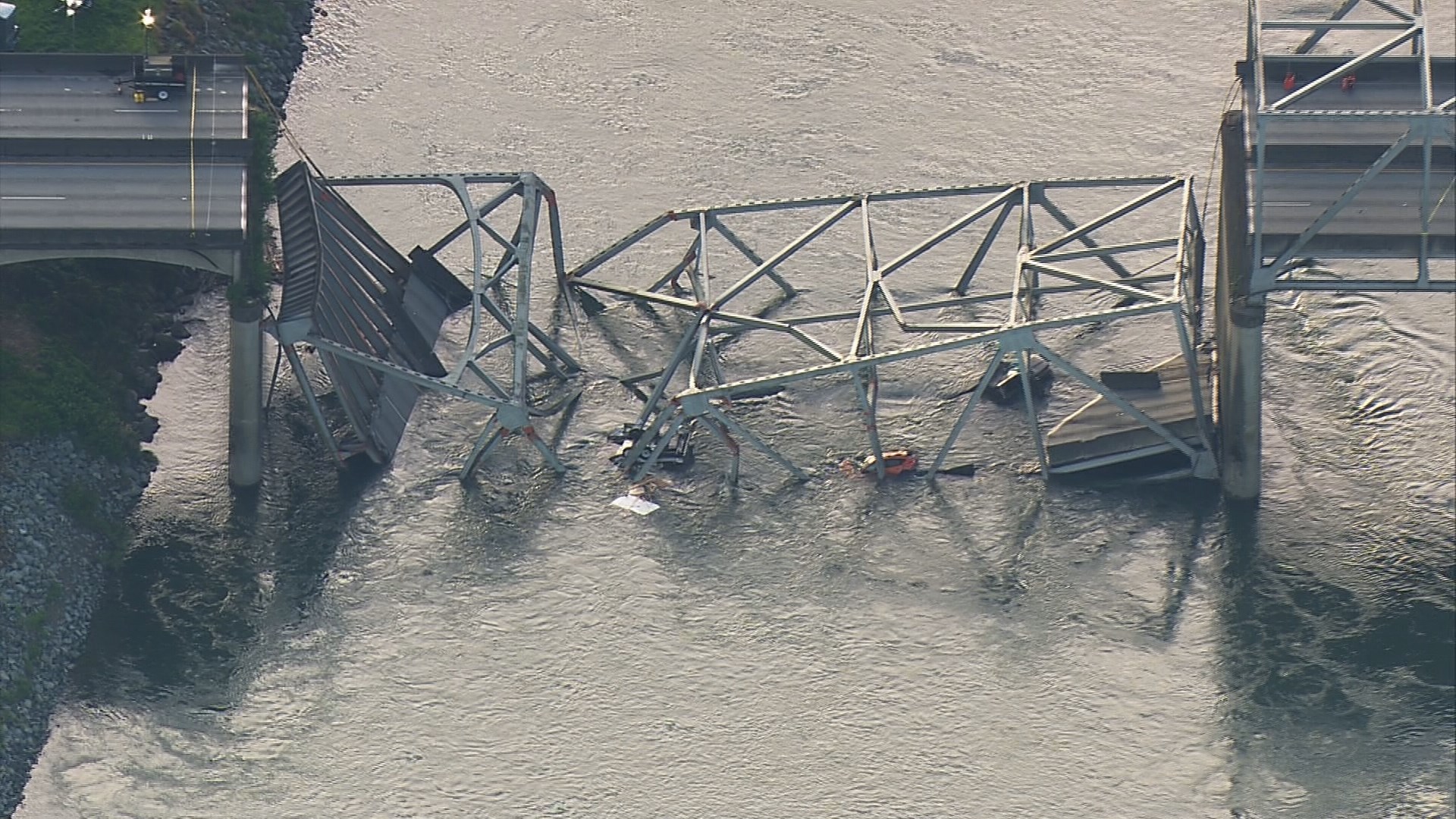OLYMPIA, Wash. - The Washington State Patrol issued a report Monday with its final findings from the Skagit River bridge collapse, saying that the truck driver who was driving an oversized load hit 11 arced sway braces on the bridge during the May 2013 accident that sent two cars into the river.
The report notes that William Scott, who was driving the truck with the tall load for Mullen Trucking, was permitted to carry a load of no higher than 15-feet nine inches. After the collapse, his truck was measured at 15-feet 11 inches, a detail that was previously made public during a National Transportation Safety Board investigation. Scott was ticketed this past May for negligent driving.
Patrol spokesman Bob Calkins said that the state's report on the incident was completed last week, but that Scott was issued the ticket in May. The infraction carries a fine of $550.
In July, the NTSB said that insufficient route planning, a distracted pilot driver and an inadequate permitting process by the state of Washington all played a part in the accident.
A section of the bridge fell into the water after Scott's truck hit the bridge in Mount Vernon, about 60 miles north of Seattle. Two other vehicles fell into the Skagit River, and three people were rescued with minor injuries.
The pilot vehicle's driver, Tammy Detray, told investigators the clearance pole mounted on her vehicle never struck the bridge. She also said she was using her cellphone on a hands-free device at the time of the accident.
In the most recent report, state patrol detectives determined that the pole did hit the bridge, "which should have triggered a warning."
"However, the driver of an over-height load is the person legally responsible for safe transit, not the driver of any support vehicle or pilot car," the cause analysis section of the report states.
The NTSB investigation showed Scott was about 400 feet, or about five seconds, behind the pilot car, instead of the 865 feet, or 10 seconds, he should have been trailing by. The state patrol investigation showed that that distance was even closer, at 350 feet.
"Even if Detray alerted Scott to a clearance issue, this time and distance would not have been sufficient to mitigate speed and avoid striking the structure," the report found
Scott told NTSB investigators a freight truck came up fast on his left. He said he drove to the bridge's right side, which had a lower vertical clearance than the center lane.
State Patrol investigators said that while Scott's load would have had clearance in the center lane, because of the truck on his left, he would had had to have changed his position on the lanes "well in advance of the bridge."
The 59-year-old Skagit bridge carries an average of 71,000 vehicles a day over the river on I-5, Washington's major north-south roadway between Oregon and Canada. Workers installed an emergency span and then replaced it with a permanent one in September 2013.


